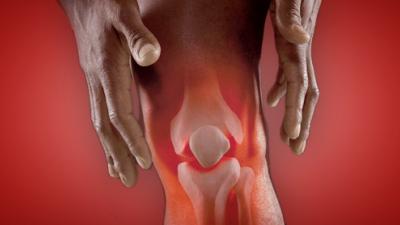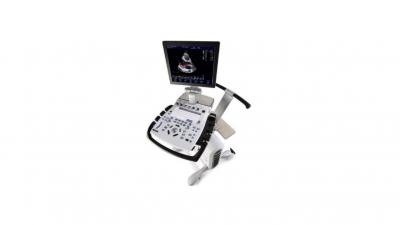MEASUREMENTS USING InBody ANALYSER INCLUDE:
Body composition analysis – metabolic water, lean mass and body fat mass for specific body segments
Body Mass Index to determine obesity level
PBF – Percentage Body Fat to determine your hidden obesity levels with normal BMI
Basic metabolism - the number of calories needed for the proper functioning of the body, securing its vital functions. Below this value, using reducing diets might not be safe to your health.
Waist to hip ratio (W.H.R.) shows the distribution of fat stored in one’s abdomen and hip. It is simple but useful to assess body fat distribution. Body fat is stored in two distinct ways. They are often categorized into and called 'apple' and 'pear' type. Apple type shows bigger girth of waist than hip and pear type has bigger girth of hip than waist. If body fat in abdomen increases more, the risk to cardiovascular diseases, diabetes, etc. becomes higher
Visceral obesity is considered to be a critical risk factor along with Percentage of body fat. It elevates the risk of hyperinsulinemia, 19 hypertension, and cardiovascular disease.
This device analyses five body parts; trunk, right arm, left arm, right leg, and left leg. This function can be used as an assessment tool to evaluate the result of exercise or rehabilitation treatment.
CONTRAINDICATIONS FOR THE TEST:
- Pregnancy
- Epilepsy
- Pacemaker
- Diuretics
- Period
- Age below 3 years
- Body weight < 10kg
BEFORE THE TEST:
- empty your bladder
- don’t eat two hours before the test
- don’t drink any liquids one hour before the test
- do not exercise, swim or go to sauna on the test day
- do not shower just before the test
BODY COMPOSITION TESTS - WHERE ARE THEY USED:
PLASTIC SURGERY
To check the amount of fat tissue before and after liposuction.
INFECTIOUS DISEASES
Prolonged infectious disease or frequent relapses may lead to protein loss and muscle loss due to a lack of appetite or excessive energy consumption as a reaction to infection. Obesity can be a sign of a poor immune status. Dietary correction after body composition analysis means faster recovery.
ENDOCRYNOLOGY
Patients with type 2 diabetes and obesity should control the amount and ratio of body fat in order to reduce it. When these parameters improve, insulin resistance decreases at the same time. In addition, in diabetes, visceral fat levels must be controlled. This fat may contribute to cardiovascular complications. Body water should also be monitored. A high degree of oedema /metabolic water accumulation/ in patients with diabetes may be caused by improper diet and poor regulation of blood glucose, as well as the accumulation of body toxins, elevated blood pressure, etc.
GASTROENTEROLOGY
Necessary monitoring of body weight and its composition in case of diseases caused by poor nutrition, gastroesophageal reflux disease, peptic ulcer disease, malabsorption syndrome, inflammatory bowel disease, celiac disease, etc.
CARDIOLOGY
Excess body fat, especially visceral fat, is one of the main causes of cardiovascular disease. Therefore, its quantity and composition in the body should be controlled.
ENT
There is a correlation between obesity and obstructive sleep apnoea. A cause of apnoea in overweight people is the accumulation of fat in the throat muscles, which causes pressure disturbing free air flow. Then the breathing stops and the patient wakes up from sleep to get some air. Therefore, reducing obesity and improving body composition should be checked when treating sleep apnoea.
NEFROLOGY
Metabolic water content monitoring in the case of renal dysfunction.
ORTHOPAEDICS
After a fracture, the effectiveness of physiotherapy is checked by measuring segmental lean mass. In addition, after suffering from inflammation of, e.g., the knee, patients may have decreased lower body lean mass comparing to healthy patients, which can be easily demonstrated by analysing body composition. According to the test, they should maintain or increase lean mass and, at the same time, reduce body weight for the appropriate treatment effect.
OBESITY
Obesity is a complex problem.
Often, after stopping a slimming diet/exercises, there is a "yo-yo effect" which means a return to the initial body weight. It happens when during slimming process there is a loss of muscle or water from the body. For maintaining the long-term weight reduction, it is necessary to lose fat mass and build an adequate muscle mass.
PAEDIATRICS
Accumulation of fat tissue in childhood poses a risk of obesity in adulthood. On the other hand - the lack of body mass and muscle mass - is a factor that inhibits proper growth and development of a child. In order to prevent these disorders, the weight and body composition of the child should be monitored.
PULMUNOLOGY
An increase in fat tissue, especially visceral fat, changes respiratory function and reduces the lung volume. We can predict lung function from body composition analysis and observe body fat index and changes in lean body mass to improve lung function by training the respiratory muscles.
A patient with lung disease usually avoids exercising as it causes shortness of breath. In case of chronic lung disease, a decrease in body weight and muscles may occur, which should be corrected with a diet and exercise program.
PHYSIOTHERAPY
Body composition, and especially increase of muscle mass, is an important motivating factor for further rehabilitation efforts.
FITNESS
Body composition assessment allows to customize training programs to achieve the desired values for muscle and fat tissue mass. It is also possible to monitor the progress and modify exercise program if there are any dietary or training errors.
UROLOGY
With nocturnal enuresis, patients have a high index of oedema and metabolic water accumulation in legs in the afternoon. The treatment effectiveness is checked by monitoring the swelling index and body water content.
Body composition can also be used in the treatment of andropause in men, which manifests itself with muscle mass decrease and fat build-up around the internal organs.
All articles posted on the website are the property of Poland Medical. Copying or distribution in whole or in part in any form or by any means without the administrator’s consent is prohibited, and will be treated as illegal infringement of copyrights.




